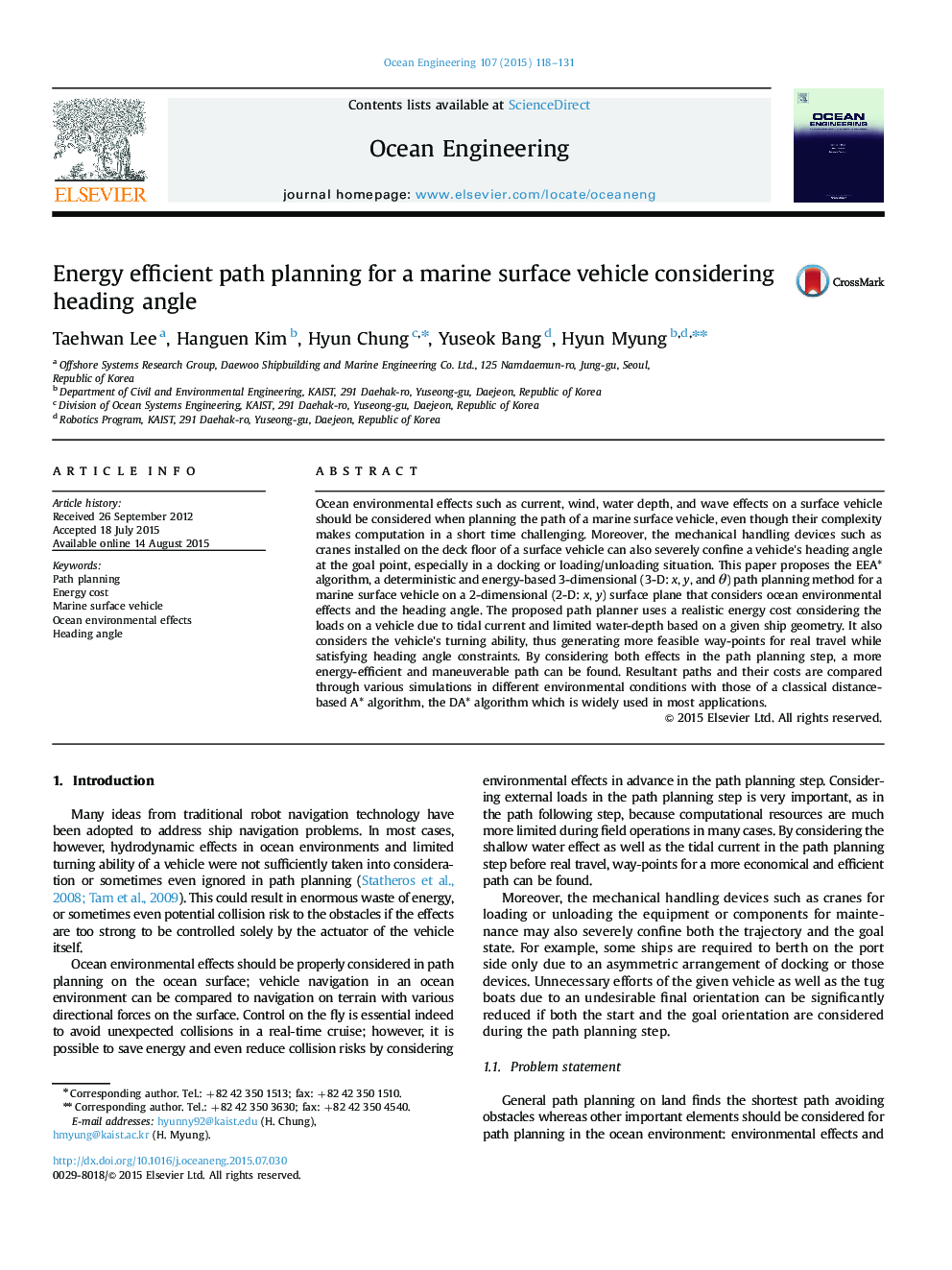| کد مقاله | کد نشریه | سال انتشار | مقاله انگلیسی | نسخه تمام متن |
|---|---|---|---|---|
| 1725414 | 1520683 | 2015 | 14 صفحه PDF | دانلود رایگان |
• We propose an energy-optimal path planning algorithm for a marine surface vehicle.
• We consider environmental effects such as tidal current and water depth effect.
• We employ a realistic energy-based cost function considering the vehicle shape.
• It generates way-points satisfying given heading angles and turning ability.
• We compare our result with that of distance-based A* algorithm.
Ocean environmental effects such as current, wind, water depth, and wave effects on a surface vehicle should be considered when planning the path of a marine surface vehicle, even though their complexity makes computation in a short time challenging. Moreover, the mechanical handling devices such as cranes installed on the deck floor of a surface vehicle can also severely confine a vehicle׳s heading angle at the goal point, especially in a docking or loading/unloading situation. This paper proposes the EEA* algorithm, a deterministic and energy-based 3-dimensional (3-D: x, y, and θ) path planning method for a marine surface vehicle on a 2-dimensional (2-D: x, y) surface plane that considers ocean environmental effects and the heading angle. The proposed path planner uses a realistic energy cost considering the loads on a vehicle due to tidal current and limited water-depth based on a given ship geometry. It also considers the vehicle׳s turning ability, thus generating more feasible way-points for real travel while satisfying heading angle constraints. By considering both effects in the path planning step, a more energy-efficient and maneuverable path can be found. Resultant paths and their costs are compared through various simulations in different environmental conditions with those of a classical distance-based A* algorithm, the DA* algorithm which is widely used in most applications.
Journal: Ocean Engineering - Volume 107, 1 October 2015, Pages 118–131
